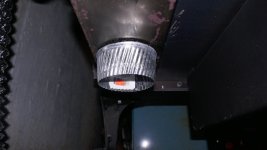Baby Grand
Elite Member
- Joined
- Nov 12, 2007
- Messages
- 4,649
- Location
- Windsor, CT.
- Tractor
- Kubotas: L3240GST B2320HST B5100D & G5200H
KennyD mentioned stack effect, which is the reason I'm adding an OAI duct for our basement stove. We have a 1950's one story ranch with a full basement. The stove operates well on cold, calm days once the burn gets going and I shut the damper down. The key to getting good heat out of the stove is maintaining a hot, even burn. Using the dryer, bathroom fans, our kitchen fan, and when the oil furnace kicks on causes the pressure inside the house to drop. This pressure drop reduces the chimney draft, changing the burn rate noticeably. Opening a window a little equalizes the house pressure, chimney draft and burn rate, but let's cold air into the house. Plus I always forget to close the window once the fan is turned off. The OAI should achieve the equalization without the chilling side effect and the inevitable discussion about "why I always leave windows open when it's freezing outside".

